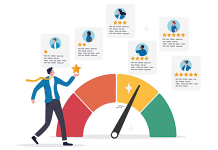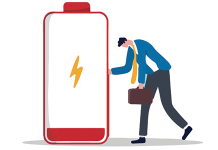Every company that sponsors an incentive or brand loyalty campaign wonders the same thing: How does our campaign measure up to benchmark results? Are there benchmark results?
A new study by the Incentive & Engagement Solution Providers (IESP) was designed to help answer this daunting question. The IESP is a strategic industry group within the Incentive Marketing Association (IMA). We wanted to learn more about the study results, which were previewed at this summer’s IMA Summit, and what it means for the industry going forward.
The following excerpts are from an interview with Chris Galloway, content chair for the IESP board of directors, and executive vice president of strategy and design for Brandmovers, Inc., an Atlanta-based provider of B2C and B2B customer loyalty programs.
 First, why was this research important, and what were the findings?
First, why was this research important, and what were the findings?
Sales and marketing executives want to know what they can expect in return for investing in an incentive, B2B, channel or loyalty program. That is a fair question, and one that we as an industry have had trouble answering succinctly. We can pull from dozens of published case studies and examples, but these are best-case scenarios and not necessarily helpful in setting a minimum expectation — we need a baseline.
In order to create that “line in the sand,” we needed to first establish a qualifier — that the incentive or B2B loyalty programs are well-designed. Our industry is often clouded by examples of programs that didn’t work, but that are later found to be poorly designed and executed. Our goal, therefore, was to establish benchmarks for success based on well-designed programs.
Respondents for this survey included program owners and managers from sponsoring brands, as well as design strategists and program directors from companies that provide incentive solutions. The respondents shared experience gleaned from their work with over 470 programs throughout their careers. The three most tangible company benefits of well-designed incentive and B2B loyalty programs include:
- Revenue lift – Programs should generate a minimum of 5 to 10% year-over-year lift. Many programs achieve better than this, and the incremental lift should be over and above market
- Increased retention – Again, a minimum of 5 to 10% increase in retention of people (employees, indirect salespeople, customers, etc.) should be expected based on survey Retention is essential for growth, as we know the cost of churn is higher than just the revenue that is lost.
- ROI – At a minimum, programs should generate an ROI of between 2:1 and 4:1. This is significant. Because of the data-filled nature of incentives and B2B loyalty programs, we can truly measure ROI and isolate what is truly incremental. What other marketing interventions have this level of return (not to mention the fact that one-third of programs in the survey achieved even greater ROI than 4:1)?
To be clear, were these findings based on documented data from programs?
No, because most program results are proprietary and are not reported in any public way. In order to establish our baseline benchmarks, we were able to query the anecdotal experiences of experts with, collectively, over 500 years of history connected to these kinds of programs. These findings are not intended to be final, but rather the starting point for future research on how to ensure these benchmarks are achieved by companies and brands.
Ensuring that companies reach these benchmarks requires an understanding of what constitutes “well-designed” does it not?
Without question, and that is the direction the IESP is taking for our research. The IMA offers a great deal of training on how to design effective incentive programs, and I recommend the Incentive Professional designation to my industry colleagues every chance
I get. But how do we educate sponsoring companies and incentive program buyers? It begins with establishing a value proposition for running well- designed programs, which is the subject of the current research.
Program buyers do not need to be certified experts (that’s what they hire IESP solution providers for) but should be armed with the essentials to ensure maximum ROI. This fall, we hope to launch a study that delves deeply into the topic of effective program design and provide a roadmap, supported by data and statistics, that helps them make great choices for their company and their audience.
Aside from the tangible benefits you mentioned, did the survey highlight any less- tangible benefits to companies for utilizing incentives or B2B loyalty programs?
Absolutely. The findings showed that the top three intangible benefits from running well-designed programs were:
- High-engagement communications channels – Program members consume communications at a much higher rate, and are great sources of feedback
- Increased brand loyalty – Increasing the preference of your audience toward your brand even in the face of competitive offers
- Enhanced long-term relationships – Building an emotional connection with the people that matter most to your success
Actually, there are tangible benefits for companies that arise from these more intangible aspects, but they are longer- term in nature and somewhat harder to isolate and measure
For people who are interested in this study and in future research from the IESP, are there opportunities to get involved or stay plugged in?
Yes, 100% yes! We encourage anyone and everyone who is interested in incentive and B2B or loyalty solutions to take a look at the resources on the IESP website, including a white paper on this research. You can also sign up to receive updates on future research, white papers and podcasts from the IESP.
This first study and our upcoming research is directly aligned with the IESP’s mission of serving as a trusted resource for business leaders globally in helping their organizations achieve results through engagement and incentive solutions. The IESP welcomes new members to contribute their expertise. It’s the best place to have your voice heard related to our future research and receive visibility for your expertise. In fact, I am seeking volunteers to join our content and corporate outreach committee, so feel free to reach out to me via LinkedIn or via email (cgalloway@ brandmovers.com).
IESP members have first and full access to study results. Results of future studies will be shared on the IESP web- site, LinkedIn, and in future reports from Sales & Marketing Management.
Chris Galloway is the head of strategy and design at Brandmovers Inc., an Atlanta-based technology solution provider that develops and executes engaging incentive and brand loyalty campaigns. He serves on the board of the Incentive and Engagement Solution Providers, a strategic subset of the Incentive Marketing Association.





